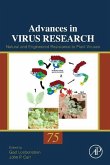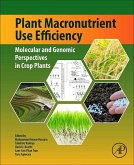Viruses are a huge threat to agriculture. In the past, viruses used to be controlled using conventional methods, such as crop rotation and destruction of the infected plants, but now there are more novel ways to control them. This volume focuses on topics that must be better understood in order to foster future developments in basic and applied plant virology. These range from virus epidemiology and virus/host co-evolution and the control of vector-mediated transmission through to systems biology investigations of virus-cell interactions. Other chapters cover the current status of signalling in natural resistance and the potential for a revival in the use of cross-protection, as well as future opportunities for the deployment of the under-utilized but highly effective crop protection strategy of pathogen-derived resistance.
"A mandatory purchase for all types of comprehensive libraries, both public and university, as well as for those interested in or doing research in the field of virology." --Military Medicine
"This serial...is well known to virologists. It is a valuable aid in maintaining an overview of various facets of the rapidly expanding fields of virology...Timely, informative, and useful to the student, teacher, and research scientist." --American Scientist
"This serial...is well known to virologists. It is a valuable aid in maintaining an overview of various facets of the rapidly expanding fields of virology...Timely, informative, and useful to the student, teacher, and research scientist." --American Scientist








